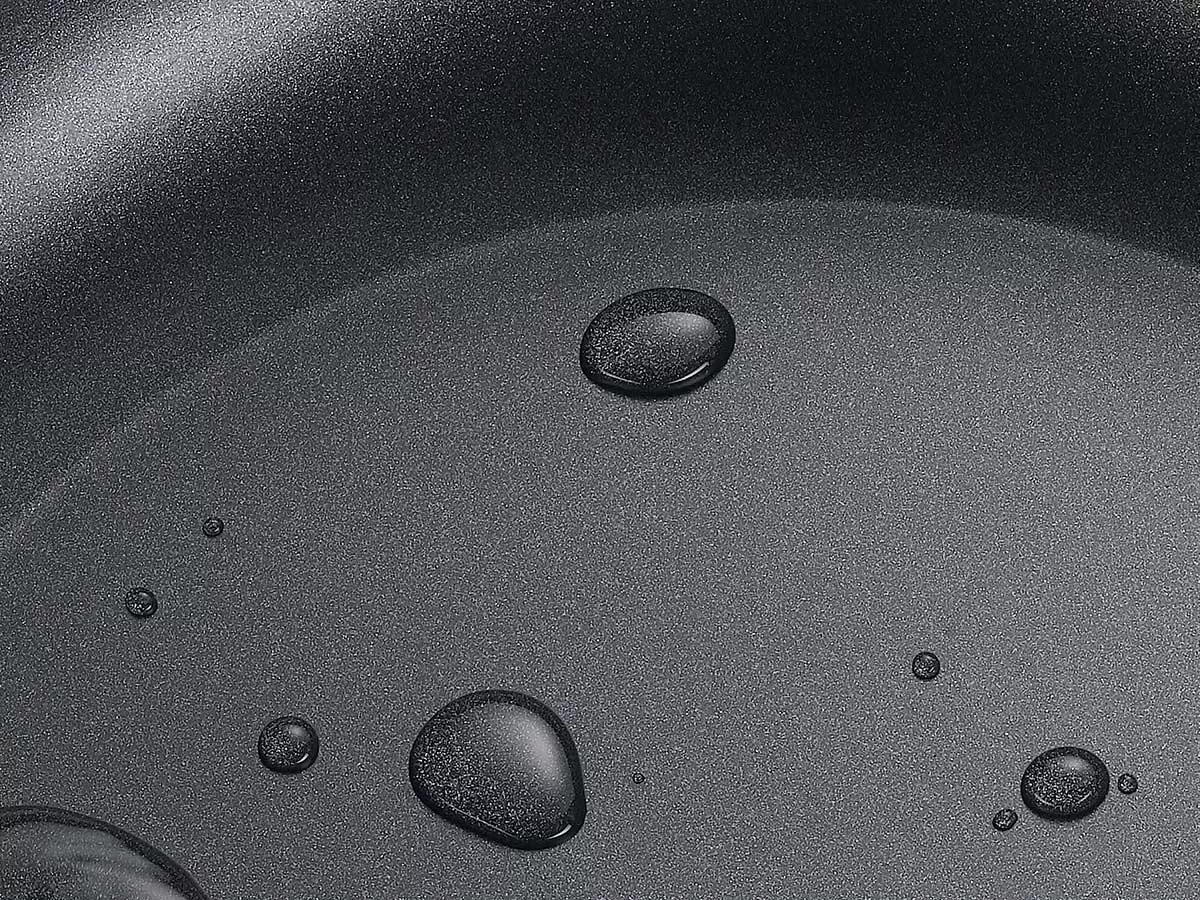Understanding Polyether Sulfone Coating
What is Polyether Sulfone Coating?
Polyether sulfone (PES) coating is a high-performance polymer known for its excellent thermal and mechanical properties. Developed in the 1970s, PES is often used in various industrial applications due to its durability and resistance to harsh environments.
Key Properties of Polyether Sulfone Coating
PES coatings have several key properties that make them stand out:
- High temperature resistance: PES can withstand extreme temperatures without losing its structural integrity.
- Chemical resistance: It is resistant to many chemicals, making it suitable for use in challenging environments.
- Transparency: PES is often transparent, allowing for aesthetic applications where visibility is important.
| Property | Description |
|---|---|
| Temperature Resistance | Up to 200°C |
| Chemical Resistance | Resistant to acids and bases |
| Water Absorption | Moderate, affects performance in some cases |
Applications of Polyether Sulfone Coating
PES coatings are used in various fields, including:
- Aerospace: For components that require lightweight and durable materials.
- Medical devices: Due to its biocompatibility and sterilization capabilities.
- Automotive: In parts that need to endure high temperatures and chemical exposure.
Polyether sulfone coatings are essential in industries where performance and reliability are critical. Their unique properties make them a preferred choice for many applications.
Benefits of Polyether Sulfone Coating for Surface Protection
Enhanced Durability
Polyether sulfone (PES) coatings are known for their exceptional strength. They can withstand wear and tear better than many other coatings. This makes them ideal for surfaces that experience heavy use. Here are some key points about their durability:
- Long-lasting: PES coatings can last for years without significant degradation.
- Impact resistance: They can absorb shocks and resist scratches effectively.
- Wear resistance: PES coatings maintain their integrity even under abrasive conditions.
Chemical Resistance
One of the standout features of polyether sulfone coatings is their chemical resistance. They can handle exposure to various substances without breaking down. This is crucial for applications in industries like:
- Automotive: Protects parts from oil and fuel.
- Food processing: Resists cleaning agents and acids.
- Medical: Safe against sterilization chemicals.
Temperature Stability
PES coatings can endure extreme temperatures, making them suitable for diverse environments. Their temperature stability is beneficial in:
- High-heat applications: They remain stable in hot conditions, unlike some plastics.
- Cryogenic environments: PES coatings can also perform well in very cold settings.
Polyether sulfone coatings are a reliable choice for protecting surfaces due to their durability, chemical resistance, and temperature stability. They offer a long-lasting solution for various applications, ensuring that surfaces remain intact and functional over time.
Application Techniques for Polyether Sulfone Coating
Spray Coating
Spray coating is a popular method for applying polyether sulfone coatings. This technique allows for even coverage and is suitable for large surfaces. Here are some key points about spray coating:
- Quick application: It can cover large areas in a short time.
- Versatile: Works on various shapes and sizes of surfaces.
- Fine control: Adjusting the spray nozzle can help control the thickness of the coating.
Dip Coating
Dip coating involves immersing the object into a solution of polyether sulfone. This method is effective for achieving a uniform layer. Key aspects include:
- Simple process: Just dip and remove the item.
- Consistent thickness: The coating thickness can be controlled by the speed of withdrawal.
- Ideal for complex shapes: It can coat intricate designs effectively.
Brush Coating
Brush coating is a manual method where a brush is used to apply the coating. This technique is beneficial for small areas or touch-ups. Important points are:
- Precision: Allows for detailed work on specific areas.
- Cost-effective: Requires minimal equipment.
- Control: The user can control the amount of coating applied.
Polyether sulfone coatings are known for their excellent adhesion and durability, making them suitable for various applications, including in the food and electronic industries.
| Technique | Coverage Speed | Thickness Control | Best For |
|---|---|---|---|
| Spray Coating | Fast | High | Large surfaces |
| Dip Coating | Moderate | Moderate | Complex shapes |
| Brush Coating | Slow | High | Small areas or touch-ups |
Comparing Polyether Sulfone Coating with Other Coatings
Polyether Sulfone vs. Polyethylene Coatings
Polyether sulfone (PES) coatings are known for their high-temperature resistance and durability. In contrast, polyethylene coatings are more flexible but lack the same level of heat resistance. Here’s a quick comparison:
| Property | Polyether Sulfone | Polyethylene |
|---|---|---|
| Temperature Resistance | High | Moderate |
| Flexibility | Moderate | High |
| Chemical Resistance | Excellent | Good |
Polyether Sulfone vs. Polypropylene Coatings
When comparing PES to polypropylene coatings, PES stands out due to its chemical stability. Polypropylene, while lightweight, is less resistant to harsh chemicals. Here’s how they stack up:
- Chemical Stability: PES is more stable in aggressive environments.
- Durability: PES coatings last longer under stress.
- Cost: Polypropylene is generally cheaper but may require more frequent replacements.
Polyether Sulfone vs. Polysulfone Coatings
Both PES and polysulfone coatings offer great performance, but PES has a slight edge in temperature stability. Here’s a brief overview:
- Temperature Stability: PES can withstand higher temperatures than polysulfone.
- Mechanical Properties: PES has superior mechanical strength.
- Hydrophobicity: PES is more hydrophobic, making it suitable for specific applications.
In summary, while each coating has its strengths, polyether sulfone coatings are often preferred for their exceptional durability and resistance to extreme conditions. Choosing the right coating depends on the specific needs of your project.
Maintenance and Longevity of Polyether Sulfone Coated Surfaces
Cleaning Polyether Sulfone Coated Surfaces
To keep your polyether sulfone coated surfaces in great shape, regular cleaning is essential. Here are some tips:
- Use mild detergents to avoid damaging the coating.
- Rinse thoroughly with water to remove any soap residue.
- Avoid abrasive materials that can scratch the surface.
Repairing Damaged Coatings
If your coating gets damaged, it’s important to address it quickly. Here’s how:
- Assess the extent of the damage.
- Clean the area around the damage.
- Apply a suitable repair product designed for polyether sulfone coatings.
Expected Lifespan of Coated Surfaces
The lifespan of polyether sulfone coatings can vary based on usage and maintenance. Generally, you can expect:
- 5-10 years for light use.
- 3-5 years for moderate use.
- 1-3 years for heavy use.
Regular maintenance can significantly extend the life of your polyether sulfone coated surfaces. Proper care ensures durability and performance over time.
Innovations and Future Trends in Polyether Sulfone Coating
Nanotechnology in Polyether Sulfone Coatings
Recent advancements in nanotechnology are transforming polyether sulfone coatings. By incorporating nanoparticles, these coatings can achieve enhanced properties such as improved durability and temperature resistance. This innovation allows coatings to withstand extreme conditions, making them suitable for various applications.
Eco-friendly Coating Solutions
The push for eco-friendly solutions is leading to the development of sustainable polyether sulfone coatings. These coatings are designed to minimize environmental impact while maintaining high performance. Key features include:
- Reduced volatile organic compounds (VOCs)
- Biodegradable components
- Energy-efficient application processes
Advancements in Coating Application Methods
New techniques in coating application are making it easier and more efficient to apply polyether sulfone coatings. Some of these advancements include:
- Spray Coating: Allows for even distribution and quick drying.
- Dip Coating: Ensures complete coverage of complex shapes.
- Brush Coating: Ideal for touch-ups and small areas.
The future of polyether sulfone coatings looks promising, with innovations paving the way for better performance and sustainability.
| Feature | Traditional Coatings | Polyether Sulfone Coatings |
|---|---|---|
| Temperature Resistance | Moderate | High |
| Chemical Resistance | Low | Excellent |
| Environmental Impact | High | Low |
Conclusion
In summary, using polyether sulfone coatings can greatly enhance the performance and durability of various surfaces. These coatings not only improve resistance to wear and tear but also help in reducing fouling, making them ideal for applications in water purification and other industries. By choosing polyether sulfone, you are investing in a solution that offers long-lasting protection and efficiency. Whether you are looking to upgrade existing surfaces or create new ones, polyether sulfone coatings can unlock significant benefits for your projects.









